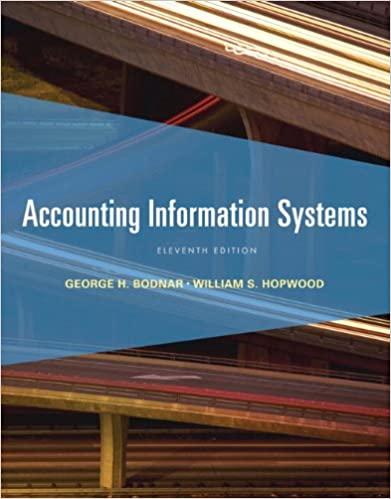The AIS of an organization may be simple or it may be massive and complex. AISs are
Question:
Business processes can be used to simplify this task. Although all entities differ, they experience similar economic events, which can be classified into one of the nine business processes discussed in the chapter. Each process should be an integral part of an organization’s internal control structure.
Required
In periodic studies of the internal controls in an organization’s AIS, accountants and auditors often develop control objectives for each major business process. The control objectives provide a basis for analysis. The accountants or auditors collect information to determine the extent to which control objectives are being achieved in each of the organization’s major business processes.
Each of the following statements is a control objective relating to a particular business process. Identify the relevant business process.
a. Vendors should be authorized in accordance with management’s criteria.
b. The prices and terms of goods and services provided should be authorized in accordance with management’s criteria.
c. All shipments of goods and services provided should result in a billing to the customer.
d. Customers should be authorized in accordance with management’s criteria.
e. Employees should be hired in accordance with management’s criteria.
f. The production plan should be authorized in accordance with management’s criteria.
g. The amounts and timing of debt transactions should be authorized in accordance with management’s criteria.
h. Compensation rates and payroll deductions should be authorized in accordance with management’s criteria.
i. Amounts due to vendors should be accurately and promptly classified, summarized, and reported.
j. Cost of goods manufactured should be accurately and promptly classified, summarized, and reported.
k. Billings to customers should be accurately and promptly classified, summarized, and reported.
l. Access to cash and securities should be permitted only in accordance with management’s criteria.
m. Access to personnel, payroll, and disbursement records should be permitted only in accordance with management’s criteria.
Financial Statements
Financial statements are the standardized formats to present the financial information related to a business or an organization for its users. Financial statements contain the historical information as well as current period’s financial...
Fantastic news! We've Found the answer you've been seeking!
Step by Step Answer:
Related Book For 

Accounting Information Systems
ISBN: 9780132871938
11th Edition
Authors: George H. Bodnar, William S. Hopwood
Question Posted:





